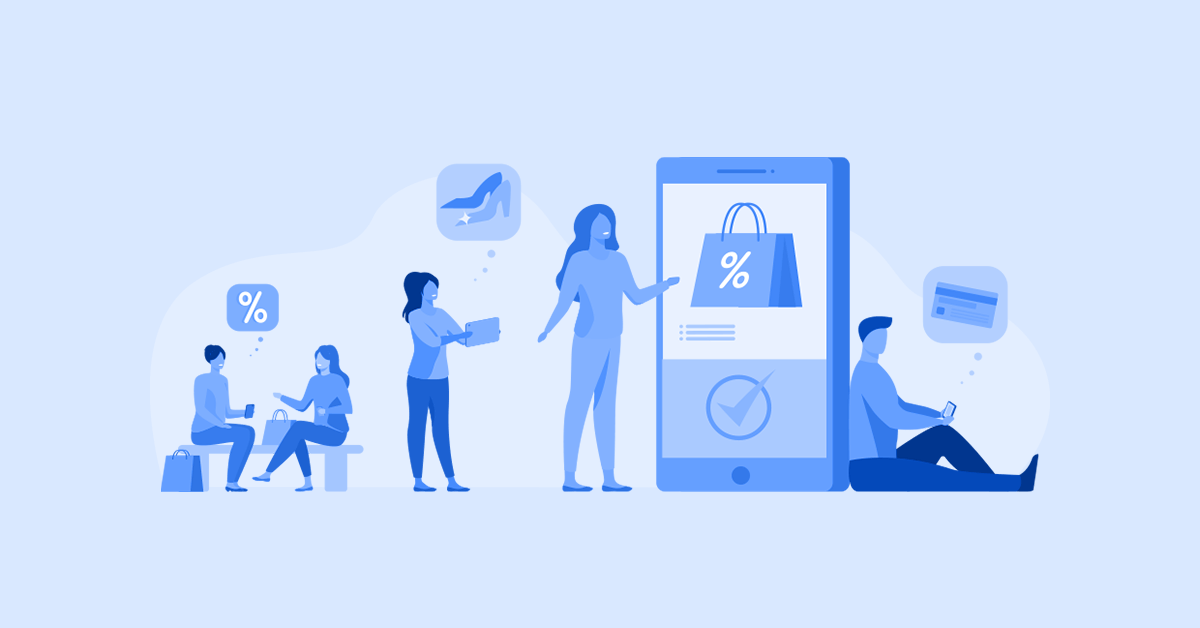An Adobe sponsored study found that 76 percent of the marketers do not use customer segmentation and behavioral segmentation data. Moreover, only 13 percent of the surveyed marketers believe that their organizations provide a segmented customer experience. Just 5 percent believe that they can truly provide data-driven and content-led experiences to their customers.
This blog will act as a kickstart guide for those marketers and businesses that haven’t already started using behavioral segmentation strategies to grow their e-commerce business.
What is Behavioural Segmentation, and Why is it Such a Big Deal?
Behavioral marketing is how companies target audiences based on their behavior, interests, intentions, geolocation, and other metrics using web analytics, cookies, search history, and other insights.
All these data points are precious for businesses. This is because segmenting customers based on their online behavior allows for;
Personalization
Behavioral segmentation allows you to cluster your target audience as per their common activities and online behavioral patterns. The inherent benefit of doing so is sending these clusters relevant and personalized communication and offers, which varies at large for these clusters.
Prioritization
The 80-20 rule never ceases to amaze us. For e-commerce brands, that means that approximately 80 percent of their revenue is generated by the top 20 percent of their customers. But how do you identify your most valuable customers? Simple. Analyze their online behavior and segment them!
Predictability
Knowing how your customers interact with your brand online and their behavioral history can reveal many things that they will likely do. Behavioral segmentation gives brands an edge in predicting their campaigns’ outcomes, vis-a-vis its interaction with the targeted audience clusters.
These benefits demonstrate how capable this type of customer segmentation can be for e-commerce brands.
Now that you’ve understood the benefits let us get to the action that makes it happen!
6 Powerful Behavioural Segmentation Strategies for E-commerce in 2021
#1. Purchase Behaviour
Knowing how your customers arrive at a purchase decision can help you pave the way to more conversions.
Based on the previous purchase data and online interactions, the customers are usually segmented as per their purchase behavior into Price-conscious, smart, needs-proof, risk-averse, delegator (I’ll get it later) persuadable. Once segmented into these categories, brands can use appropriate communication to convert them. E.g., the ‘Price Conscious’ segment can be targeted with a ‘Limited time discount.’ Similarly, the ‘Needs Proof’ segment can be targeted with user reviews and testimonials to establish the trust for purchase.
#2. Customer Journey Stage
This type of behavioral segmentation aims to cluster your customers as per their ‘purchase journey stage.’ This typically starts with awareness – interest – consideration – intent – evaluation – purchase – loyalty. However, this is a little complex strategy to begin with. Mere one or two data points are not enough to pinpoint a customer’s stage in the purchase journey.
Customers in all different stages interact and engage with content and experiences designed for all different stages, across all different channels, at all different times, and in no particular order.
The most effective way to accurately determine a customer’s current journey stage is by leveraging all of a customer’s behavioral data across channels and touchpoints so that you can build weighted algorithms based upon patterns of behavior over time. This is what AI-based marketing automation tools like Wigzo help organizations achieve.
#3. Usage/Purchase Frequency
You might be selling the best products out there. But how often are your customers using your product? Or how often they are purchasing it? Usage or purchase frequency data points tell how well your product fits in with the target audience and how likely they will purchase from you again. Usage-based behavioral segments are invaluable for understanding why certain types of customers become heavy or light users. By segmenting this way, you can test different actions and approaches to increase usage from existing customers and attract more new customers whose usage/purchase patterns match the highest frequency buyers.
#4. Specific Benefit Availing Behaviour
Some products solve a customer’s problem highly effectively. In such a case, the customer is highly likely to remain loyal to the brand and actively purchase it throughout the CLT cycle. A growing segment of such customers in your subscribers base indicates a genuine and growing demand for your product.
E.g., A natural hair oil might be preferred by a customer due to its excellent anti-dandruff qualities and apt scalp moisture. If the customer has been benefited from such qualities, he/she will stick with this hair oil for a long time – to keep availing of the haircare benefit.
#5. Variety Seeking Behaviour
Based on how many options your customers browse, compare, and peruse before making a purchase decision points to ‘variety seeking’ behavior.
It is seen where the customer is not highly involved in the purchase decision, but a large number of options are available to them for a given product. E.g., they might be using Liril as their bathing soap, but trying out Dove won’t make a difference. If they like Dove enough, they will switch to it until another better product is discovered.
#6. Timing/Occasion-Based Behaviour
Some of your customers might be engaging with you during special occasions, festive seasons, or on specially marked days on the calendar. To segment them, you’ll have to map them back to the days they made a purchase and forge an engagement strategy accordingly.
Broadly speaking, you can segment these customers as per universal occasions (festivals, seasons, etc.), repeat personal occasions (birthdays & anniversaries), and rare personal occasions (like a family reunion or a friend’s wedding).
Time for You to Create a Behavioural Segmentation Strategy…
Understanding your customers in and out can be of immense strategic value for your e-tail brand. Considering how big data and effective behavioral segmentation can reap long-term customer retention and revenue benefits – it is definitely worth implementing in your marketing.
Leverage powerful e-commerce intelligence and marketing automation tool Wigzo to get started today!
Until next time 🙂














